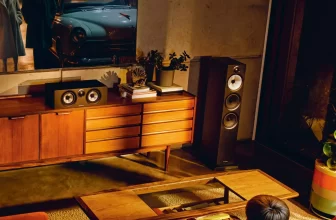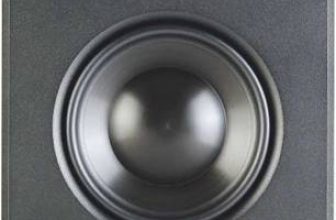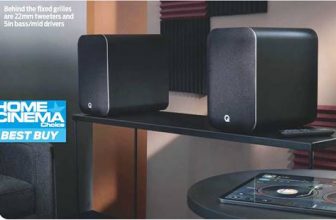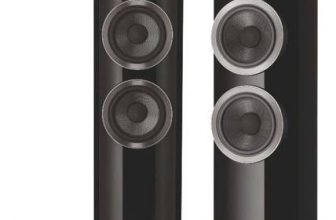Focal Maestro Utopia Evo floorstanding loudspeaker
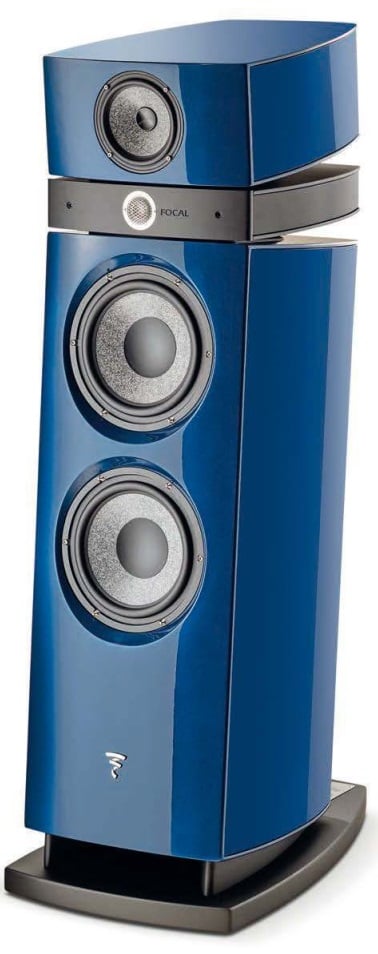
Focal Maestro Utopia Evo floorstanding loudspeaker
by Roy Gregory
In a world where fashions and faces change with alarming regularity, Focal’s distinctive Utopia series loudspeakers are about as close to a permanent fixture as you can get. Of course, there have been massive evolutionary strides made since their launch in 1995, each family marked by a distinctive technology: W cones in the original models, the Beryllium tweeter in the second series (2002), and the totally revised cabinetry, sumptuous aesthetics and Electro Magnetic bass drivers of Series III (2008). Looks-wise at least, that brings us pretty much up to date, but under that calm, designer exterior, ten years has seen significant – and in some cases necessary – change. The pint-sized Diablo and flagship Grande EM have always impressed, while the more manageable but still EM-equipped floorstanding Stella was an instant hit. But like all families, Utopia had its more characterful members, the original Scala proving frustratingly room-dependent while the similar but larger Maestro model with its twin bass drivers was definitely the awkward middle child.

All that started to change with the arrival of the Scala V2, with changes to the bass driver’s suspension and the venting of its voice coil, along with subtle modifications to the internal profiling of the bass cabinet’s walls and the space between the midrange and tweeter baffle producing a far more linear and, crucially, more integrated bottom end. Suddenly, the Scala was starting to sound like the speaker it had always promised to be. But time stands still for no man and Scala V2 has now become Scala Evo, with the application of driver developments from the Sopra series to the flagship designs.
At the same time, I’ve moved from my original listening room – the one in which the Scala V2 sounded so impressive – to a larger space in which the compact three-way might just struggle. With Focal so bullish about the improved linearity and lower distortion of the new Utopia Evo models, what better way to test their confidence than a review of the original problem child? Usher in the latest Maestro Utopia Evo – and prepare to be amazed.
On paper, the Maestro seems to offer little more than the Scala: 250mm taller, 62mm wider and 100mm deeper, its larger cabinet accommodates a second 11” W cone bass driver (incorporating an adjustable Magnetic Damping Circuit) to go with the familiar looking 6.5” W cone midrange unit and 27mm Beryllium tweeter.
It weighs in at 30kg more to the smaller speaker’s price tag. Which seems like quite a lot for 3Hz more extension and an extra dB of sensitivity. But don’t be misled ►
“The transformation was immediate, with a massive leap in dynamic range and speed of response.”
► by the numbers. Meet the Maestro in person and it possesses significantly greater physical presence and visual impact than the svelte lines of the Scala. This is an unmistakably big loudspeaker, it’s gentle curves and flawless finish failing to disguise the fact that it’s also a bruiser. The Maestro doesn’t just look big, it goes big too, with the sort of effortless insouciance and boundless energy that is as musically dramatic as it is impressive. This Maestro is no shrinking violet but it is also well-named and fortunately it has the grace, finesse, and sophistication to harness that musical power. However, unleashing that potent potential requires considerable care and not a little experimentation.
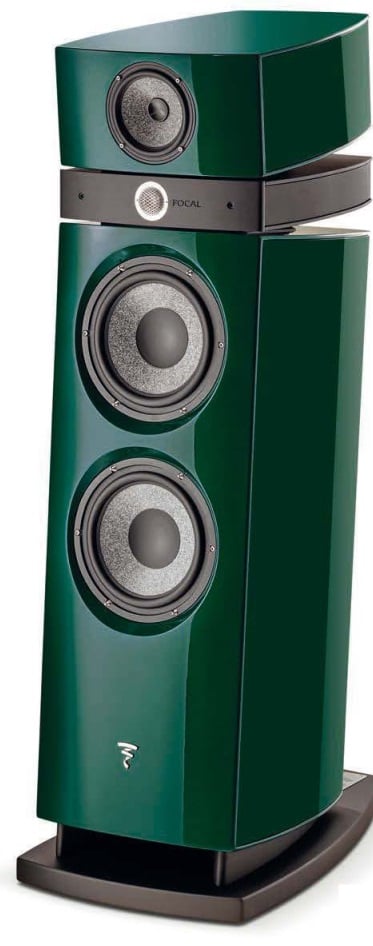
When the Maestro Evos first arrived, I started by placing them roughly where the Wilson Alexxs generally live, working from there. With several days to let the speakers warm up and settle down before the arrival of Nicolas Debard from Focal I was frustrated by their reluctance to come alive. No matter how I shoved and shunted them, tilted or tipped them, adjusted the three position level controls for each of the drivers, they always sounded flat and lifeless – until Nicolas suggested a radical change, shifting the speakers fully four feet further into the room, positioning their front baffles according to the classic rule of thirds. The transformation was immediate, with a massive leap in dynamic range and speed of response. But even so, for all the extra energy, it still took a lot of care to bring things under control, with microscopic shifts in fore and aft location, precise adjustment of listening distance, toe-in and height for each speaker before the full power and depth – and more importantly – the full communicative qualities of the bass were revealed.
So even if the Maestros aren’t just physically and visually large (even if their smooth contours are less imposing than the anthropoid identity of the bigger Wilsons or the bluff brutalism of a Magico) they need space as well if you are going to release their potent bass performance and the sheer musical impact that goes with it. With a dedicated listening space and no fixed furniture, I’m lucky enough to be able to place speakers wherever they sound their best. Putting the Maestros into a more domestically constrained space, you might not need to place them a third of the way down the room, but you will need to give them air to breathe. Do so and they’ll deliver genuinely chest pummelling weight and impact when it’s called for, along with breadth, depth, and scale in the soundstage to match. Allowing it space releases the Maestro Evo’s bottom end from the constraints of the cabinets. The music stands apart, an independent source of energy, so that when you play the first movement of the Kertesz
“Forget toe-tapping: this is serious arm-waving, virtual baton, air- guitar, and sing-along territory.”
New World [Decca CD 478 3179] those potent low-frequencies allow the timpani rolls to detonate in the listening room. And more than that, the gentle but beautifully paced opening fills the space, the air around and above the orchestra quivering in anticipation, the conductor’s control absolute. That measured tempo is everything, the tension it creates shattered by brass tuttis that are multi-facetted and full of ripping, flaring colour, just as the double basses throb with texture, plucked or bowed, and the timpanis have volume and a taut quality to their skins. All that positional precision might be about getting the Maestros’ bass right, but getting the bass right is all about the clarity and purpose it brings to the mid-band – and I do mean clarity and purpose.
The midrange driver used in the Evo generation of Utopia speakers benefits from both the TMD (Tuned Mass Damped suspension) and NIC (Neutral Inductance Circuit) technologies developed for the Sopra series, developments that, according to Focal, deliver improved linearity and lower distortion. Together with the earlier changes made to the bass driver and the addition of magnetic damping on the lowest-frequencies, there are improvements in both seamless continuity and evenness of the broad energy spectrum. When you hear notes, whether it’s the subdued strings that open the Dvorak, or Martin Chamber’s pile- driver drumming mating with Pete Farndon’s motive bass on the Pretenders’ ‘Mystery Achievement’, there’s no missing the human agency, the precisely directed physical effort that generate and shape the sound. Listening to the Maestros is a tactile, unmistakably human and, at times, almost physical experience. Forget toe-tapping: this is serious arm-waving, virtual baton, air- guitar and sing along territory.
Of course meaty, beaty, big and bouncy is all very entertaining, but what makes the Maestros genuinely special is that this immediacy, the ability to project presence and serious energy, translates to the other end of the dynamic spectrum too. Play Natalie Merchant’s hauntingly intimate ‘San Andreas Fault’ and the big Focals come over all small, up close and personal, capturing the fragility of the vocal line against the deft backing, without compromising the diction and articulation in the singing, or the substance in the drums and bass guitar. It’s a neat trick that few speakers can pull off, combining presence and delicacy in a really convincing fashion, but it’s also a trick that depends to some extent on the driving amplifier. As critical as the Maestro is of precise positioning and bass balance, it’s just as revealing of the amplifier it’s hooked up to. At 93dB, it’s not difficult to kick into life, but that doesn’t make it an easy load and matching is critical, especially if you stray towards the lower end of the power range. I used the CH Precision I1 solid-state integrated, the powerful VTL S400-II and the 40 Watt Class A Engstrom Lars mono-blocs, each to great effect. But – and it’s a big but – this was no simple case of swapping in and out the different amps. Each change in driving amplifier demanded an adjustment in bass balance (achieved by lifting or lowering the speakers on their spikes) while producing significant changes in the character, strengths, and weaknesses of the system – more significant than I’d generally expect. Tune the Maestro’s balance to the driving amp and you’ll almost certainly hear more of that amp than you did with a previous speaker. The Focals’ ability to let the music breathe extends the expressive envelope considerably, bringing out not just the sense and sensibilities in the recording and performance on the disc, but the performance of the amplifier too. The VTL’s incredible power-reserves and dynamic range were a seriously impressive match for the French floor-stander, while the I1 brought it’s own innate sense of balance, control and easy, even-handed progression to proceedings. But for sheer connection and intimacy, phrasing and flow, the 300B Engstroms took some beating. There was no way they could match the sheer scale or majesty of the big VTL, but they delivered a special magic all of their own, with a ‘they are here’ sense of proportion, presence and realism, especially on vocals – vocals as varied as Patti Smith and Patricia Petibon.
What the Maestro does is hit you right between the ears, but what about the things it doesn’t do? All that presence and immediacy balances the performance towards direct rather than reflected energy. The Maestros deliver a vast acoustic space, with tremendous width, depth, and air, but its boundaries are poorly defined compared to a speaker like the Wilson Alexia 2. You don’t hear the floor of the stage the way you do with really wide bandwidth systems. The focus here is very much on the performers and their performance, rather than the space in which that performance occurred. I suspect that this reflects a trade off of absolute extension in return for low-frequency speed and impact. There’s certainly no missing the sheer power that the Maestro instils in music as varied as the Shostakovich Leningrad Symphony or the Gravity soundtrack – and I suspect that it’s a power many listeners will be only too happy to take over the alternative acoustic niceties. It also indicates the care and attention that Focal have lavished on the crossover and the all-important mid-bass region where so much musical impact originates.
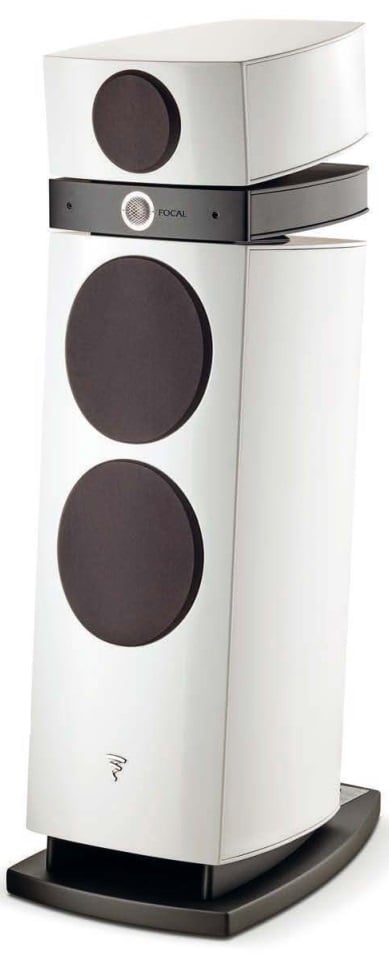
The Evo suffix on this Maestro Utopia is more than just decoration or marketing speak. The latest version of the Utopia family’s middle member is as powerful, expressive, and emotive as it is ebullient. But it never lets its sheer enthusiasm overpower or obscure musical subtleties or nuance. If the greatest challenge facing any audio system is matching the dynamic range of real life – great and small – this Maestro has more than a fair stab at it. With all that grace, power, and finesse on tap, when it comes to music the Maestro is a genuinely do it all performer. No matter what you throw at it, it comes back for more. It’s just a little larger than most people would like and greedy when it comes to space: but it’s also a more musically accomplished and dramatic speaker than they thought was possible – or at least accessible. Whichever
way you cut it, this Maestro delivers an awful lot of music, excitement and sheer energy for your hard-earned cash – and will do it with a remarkable range of different systems and material, large or small. A powerfully capable all-rounder, it is not so much a musical Jess Ennis as the audio equivalent of Maro Itoje. This Maestro need fear no comparisons with its competition, offering its own musical strengths and distinct balance of virtues. It has taken a while, but finally Focal has not only tamed its beast, but taught it some seriously impressive musical tricks. It might just be the smallest really big loudspeaker out there. +
TECHNICAL SPECIFICATIONS
Type: Three-way, reflex-loaded loudspeaker
Driver complement: 1 x 11″ (270mm)
‘W’ woofer with Magnetic Damping System: 1 x 11″ (270mm) ‘W’ woofer; 1 x 6.5″ (165mm) ‘W’ midrange with NIC motor; 1 x 1” (27mm) inverted Beryllium dome IAL2 tweeter
Bandwidth: 25Hz to 40kHz ±3dB
Sensitivity: 93dB
Impedance: 8 Ohms nominal, 3.1 Ohms minimum
Power Handling: 600 Watts
Bi-wirable: Yes
Finishes: High gloss black, white, grey, British racing green and metallic blue (custom colours to special order)
Dimensions (WxHxD): 455 x 1470 x 770mm
Weight: 116kg ea.
Manufacturer: Focal & Co
URL: focal.com
Tel: 0845 660 2680 (UK only)


